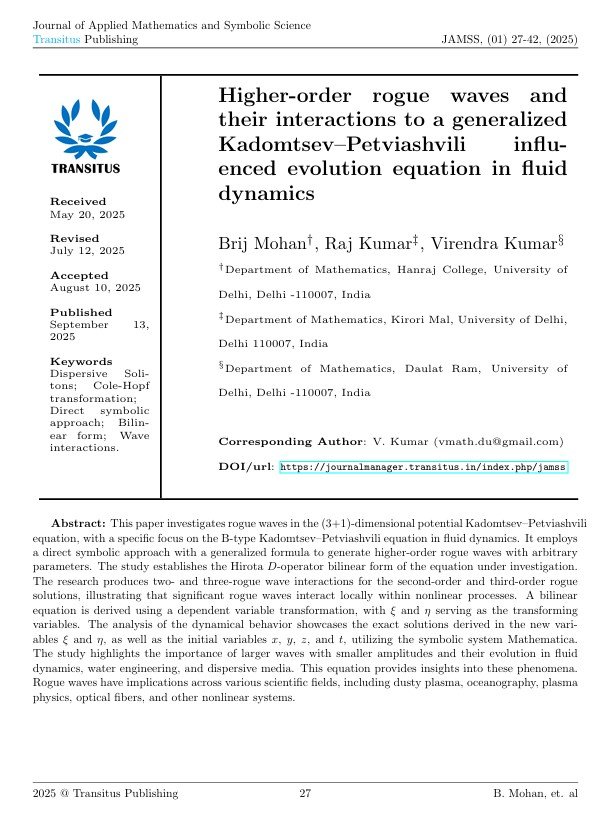The Higher-order rogue waves and their interactions to a generalized Kadomtsev–Petviashvili influenced evolution equation in fluid dynamics
Keywords:
Dispersive Solitons, Cole-Hopf transformation, Direct symbolic approach, Bilinear form, Wave interactionsAbstract
This paper investigates rogue waves in the (3+1)-dimensional potential Kadomtsev–Petviashvili equation, with a specific focus on the B-type Kadomtsev–Petviashvili equation in fluid dynamics. It employs a direct symbolic approach with a generalized formula to generate higher-order rogue waves with arbitrary parameters. The study establishes the Hirota $D$-operator bilinear form of the equation under investigation. The research produces two- and three-rogue wave interactions for the second-order and third-order rogue solutions, illustrating that significant rogue waves interact locally within nonlinear processes. A bilinear equation is derived using a dependent variable transformation, with $\xi$ and $\eta$ serving as the transforming variables. The analysis of the dynamical behavior showcases the exact solutions derived in the new variables $\xi$ and $\eta$, as well as the initial variables $x$, $y$, $z$, and $t$, utilizing the symbolic system Mathematica. The study highlights the importance of larger waves with smaller amplitudes and their evolution in fluid dynamics, water engineering, and dispersive media. This equation provides insights into these phenomena. Rogue waves have implications across various scientific fields, including dusty plasma, oceanography, plasma physics, optical fibers, and other nonlinear systems.
Downloads
Published
13-09-2025
Data Availability Statement
No datasets have been generated or analyzed during the current investigation.Issue
Section
Articles
How to Cite
[1]
B. Mohan, R. . Kumar, and V. Kumar, “The Higher-order rogue waves and their interactions to a generalized Kadomtsev–Petviashvili influenced evolution equation in fluid dynamics”, JAMSS, vol. 1, no. 1, pp. 27–42, Sep. 2025, Accessed: Nov. 12, 2025. [Online]. Available: https://journalmanager.transitus.in/index.php/jamss/article/view/50

